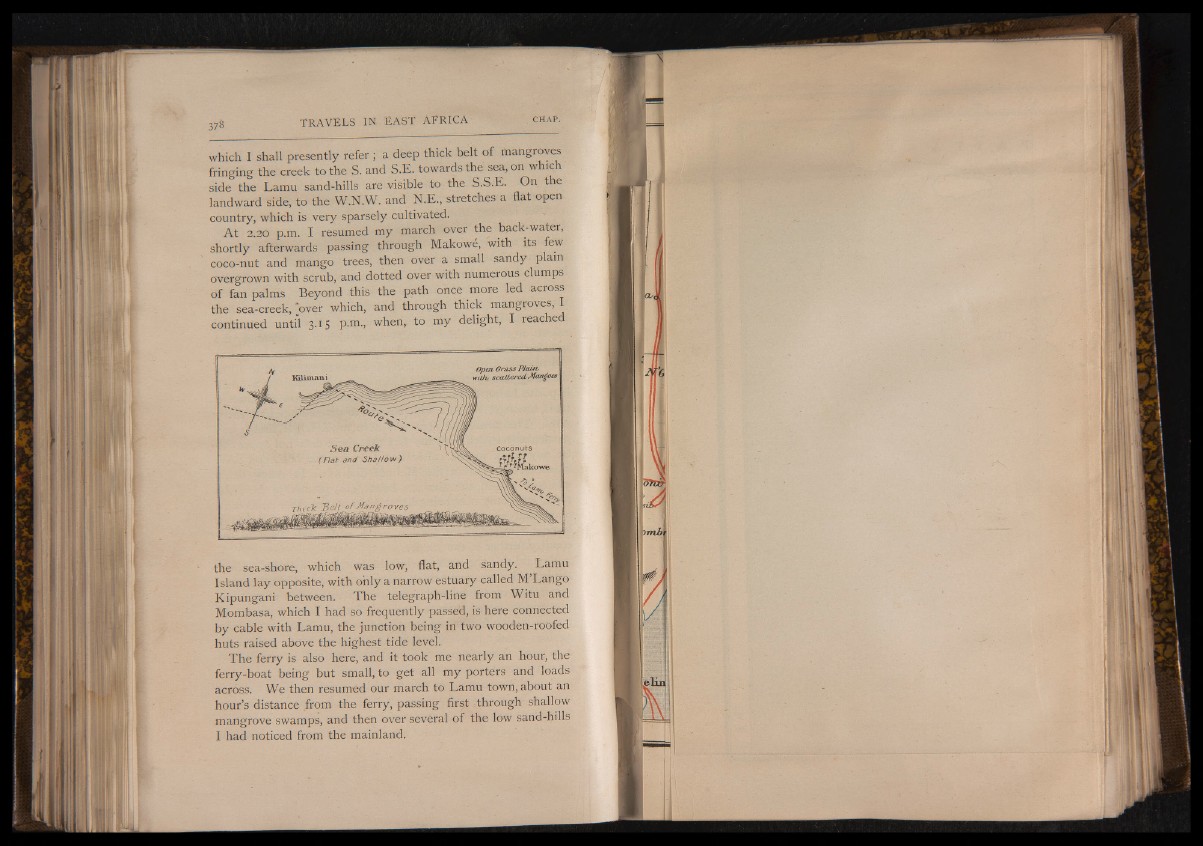
which I shall presently refer ; a deep thick belt of mangroves
fringing the creek to the S. and S.E. towards the sea, on which
side the Lamu sand-hills are visible to the S.S.E. On t e
landward side, to the W.N.W. and N.E., stretches a flat open
country, which is very sparsely cultivated.
A t 2.20 p.m. I resumed my march over the back-water,
shortly afterwards passing through Makowe, with its few
coco-nut and mango trees, then over a small sandy plain
overgrown with scrub, and dotted over with numerous clumps
of fan palms Beyond this the path once more led across
the sea-creek, [over which, and through thick mangroves, I
continued until 3.15 p.m., when, to my delight, I reached
the sea-shore, which was low, flat, and sandy. Lamu
Island lay opposite, with only a narrow estuary called M Lango
Kipungani between. The telegraph-line from Witu and
Mombasa, which I had so frequently passed, is here connected
by cable with Lamu, the junction being in two wooden-roofed
huts raised above the highest tide level.
The ferry is also here, and it took me nearly an hour, the
ferry-boat being but small, to get all my porters and loads
across. We then resumed our march to Lamu town, about an
hour’s distance from the ferry, passing first through shallow
mangrove swamps, and then over several of the low sand-hills
I had noticed from the mainland.